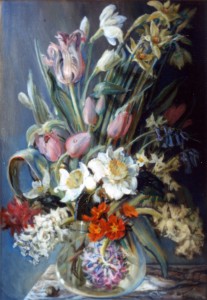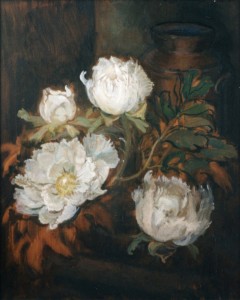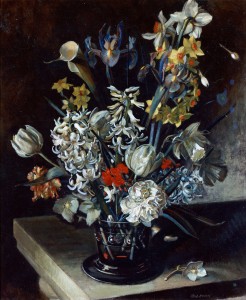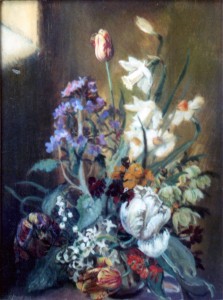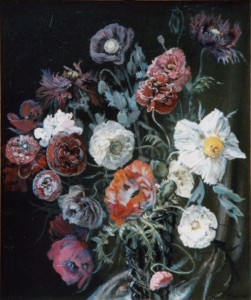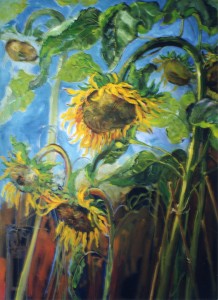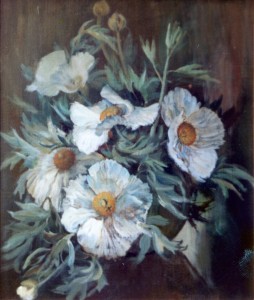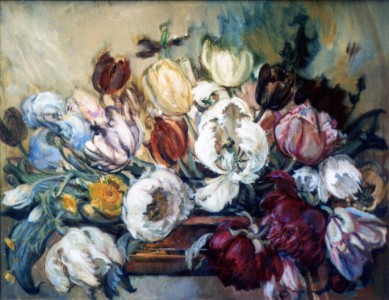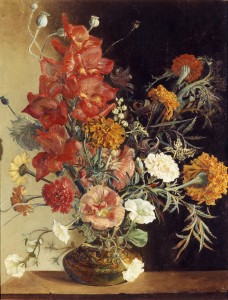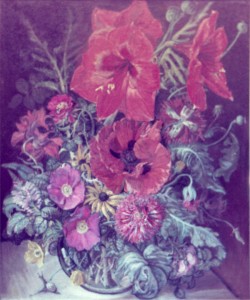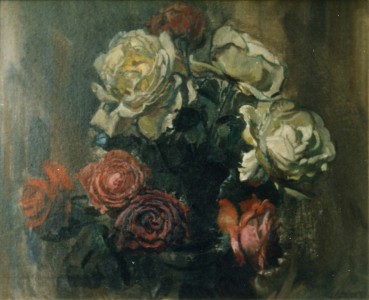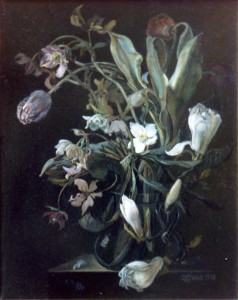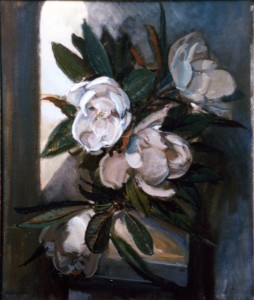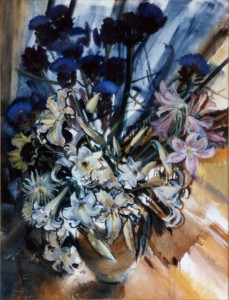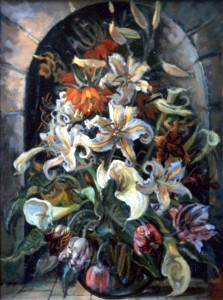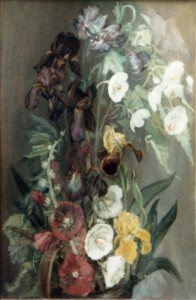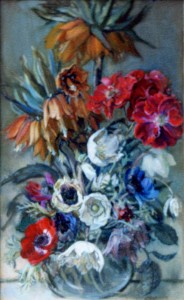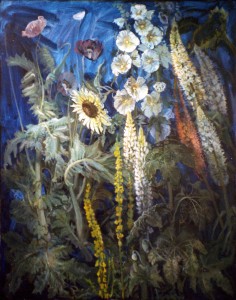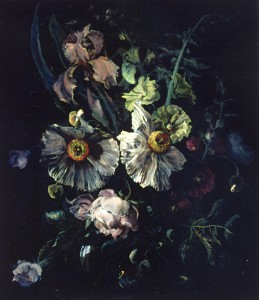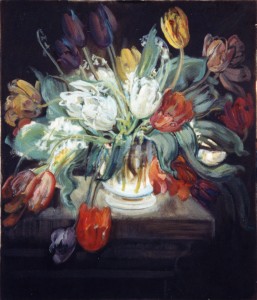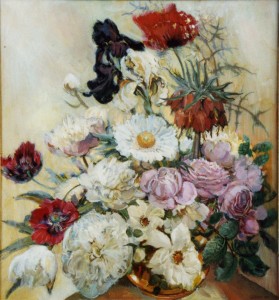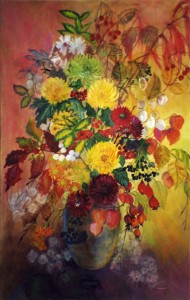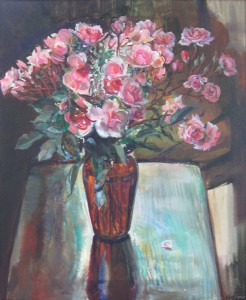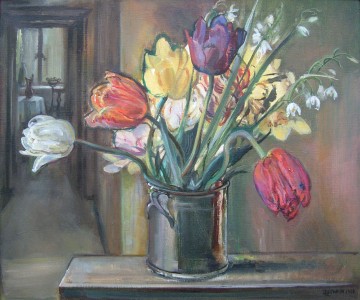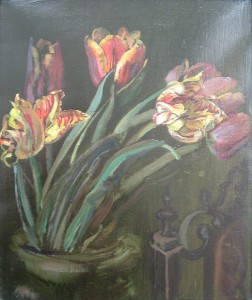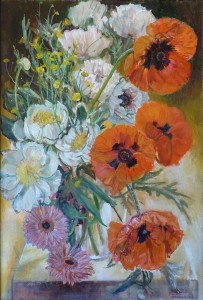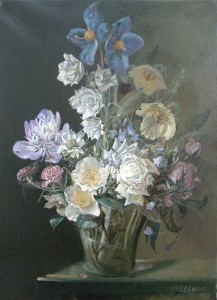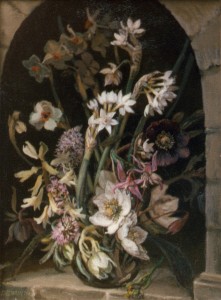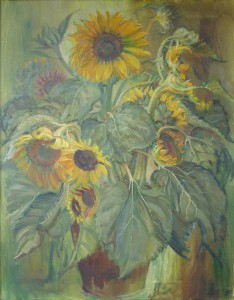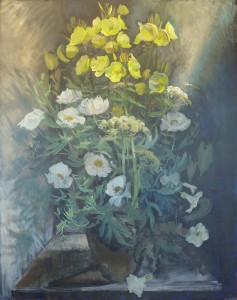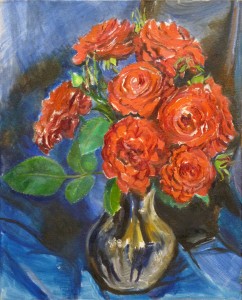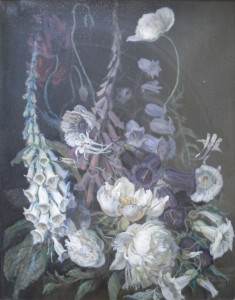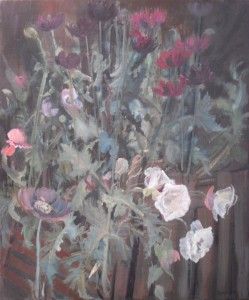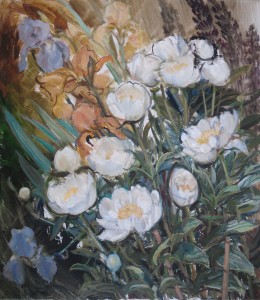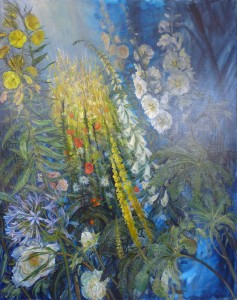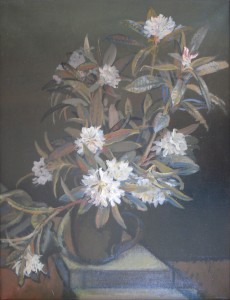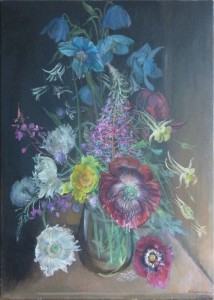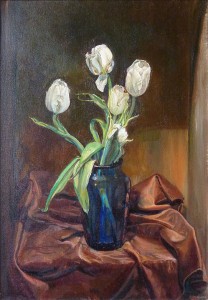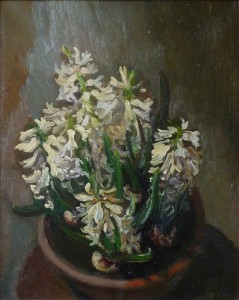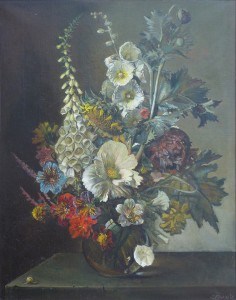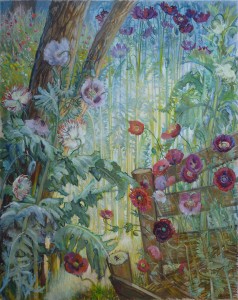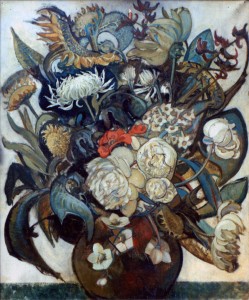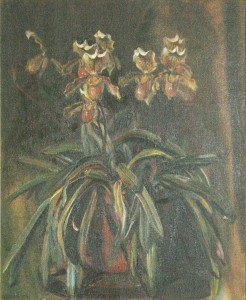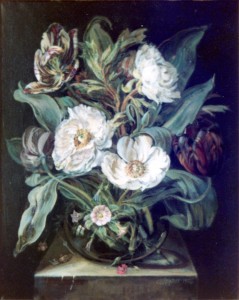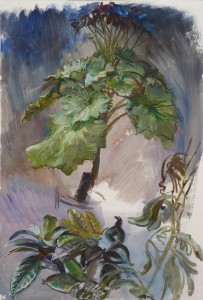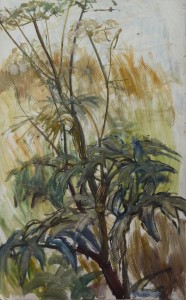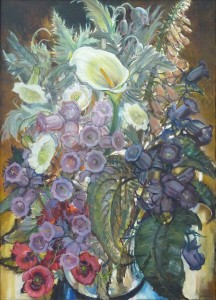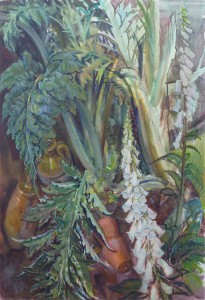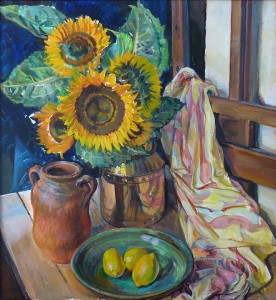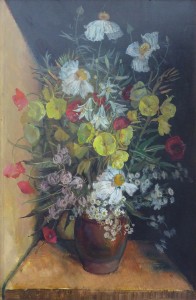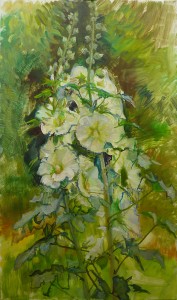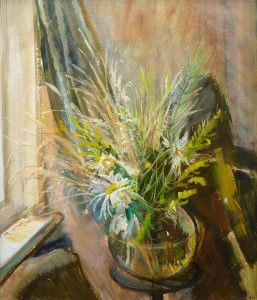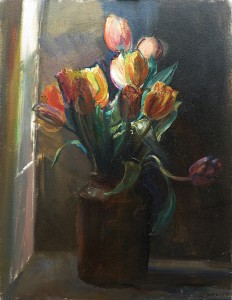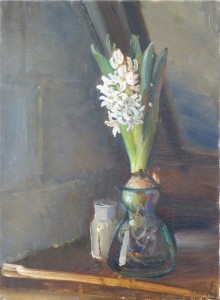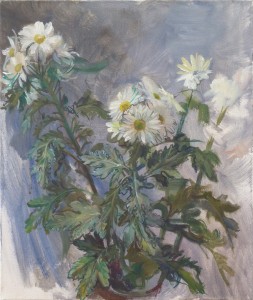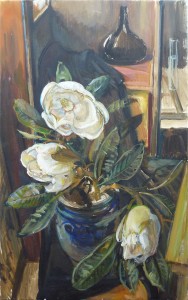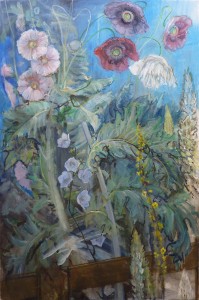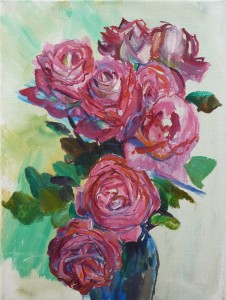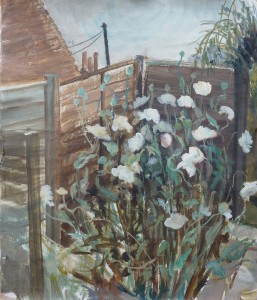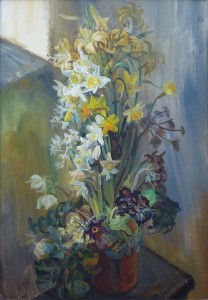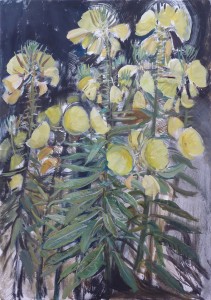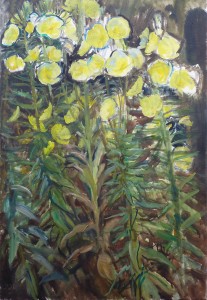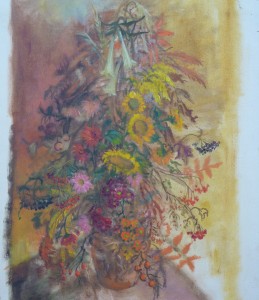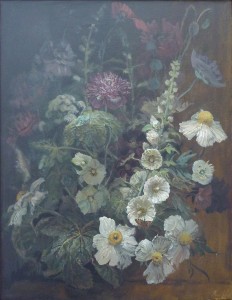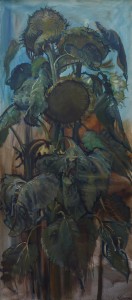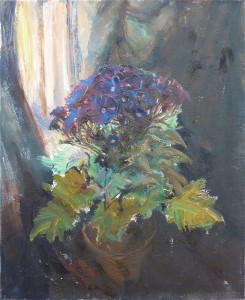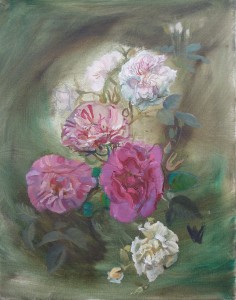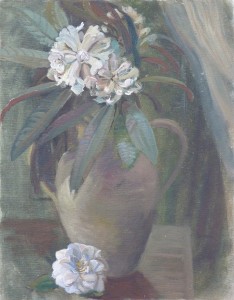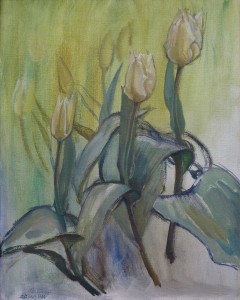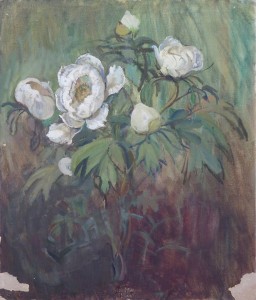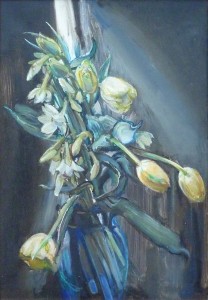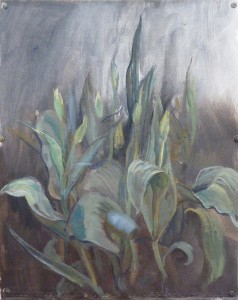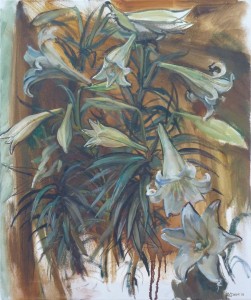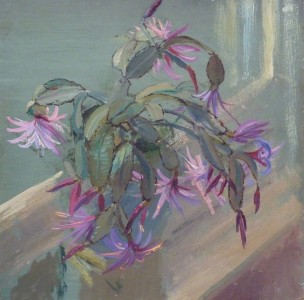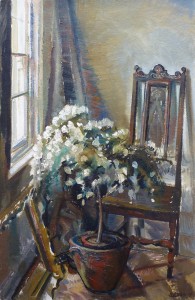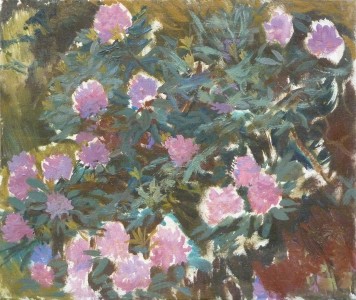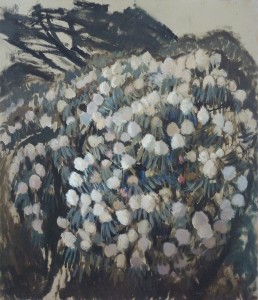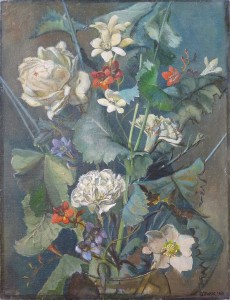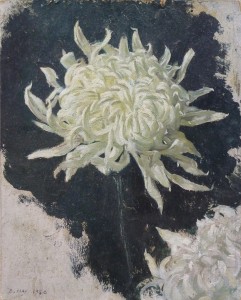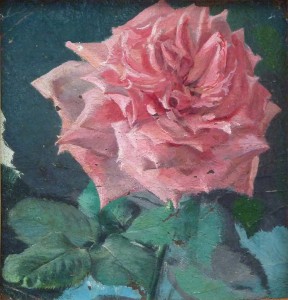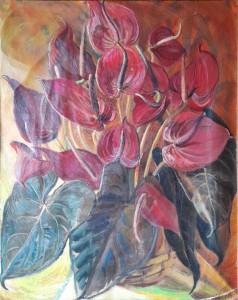“Flowers are not just pretty things which make a nice picture, a splash of colour. At least that’s not the way I see them. To me they are each and every one a miracle of growth”. This statement by Dorothy, recorded on a fragment of paper, provides a helpful introduction to her perspective on flower painting, since the arranging of her compositions was never to select the most beautiful and finest specimens from the gardens, but to highlight the “dynamic power of plant shapes” by placing flowers according to their growing habits. To reflect the strength of nature and the miracle of Creation in painting, Dorothy counselled artists to develop a thorough understanding of each plant, drawing and studying them constantly even when feeling dull or unsettled; “make endless pencil studies of growing things; recreating them. Fill books to get to know all twists and turns and tricks and marvels of creation”. This also included the taking of notes and sketching compositional ideas in order to best communicate the desired message.
This was not the way Dorothy had always painted. Indeed, most appropriately perhaps, it is with flower compositions that Dorothy’s writings show the greatest evolution of her technique and painting theory. She mentions that an artist should “not start the other way round as I have done in the past by letting the selected flowers form their own composition with the flavour emerging by itself. Be in full creative control right from the start and make the floral forms subject to conception”. She did, however, allow that at the same time nature itself communicates through exciting compositional shapes that are beyond the scope of human invention. In such cases, when plants and flowers of this nature are to be used, they should be made the single subject of a composition, letting “sensibility and creative powers be subjective (sic.) to created form and fusing with it form a dynamic recreation”.
The evolutionary nature of her flower composition work prompted Dorothy to write what she referred to as her “Revised Flower Composition Method:
- Stretch plenty of canvases, different sizes and shapes but of inspiring proportions.
- Put toned grounds on. Again, in varying degrees of tone and warmth with great imaginative sensibility and allow light or suggestion of light to filter in from left. Do not put in any other suggestion of space at this stage.
- Select main theme plant or plants with which to create and relate it to the suited canvas size and shape. If necessary make notes of sketches of growing habits and eccentricities to get full sense of creative possibility.
- Start getting feel of composition inspired by growing shape of selected plants, and feel way into space. When first placing flower in composition stand well back from it (6 or 8 ft) to get hold of main shape and character without detail. Draw closer later. Stand well away also from canvas.
- Write notes on atmosphere and creative possibilities thus established and select flowers which lend themselves to emulate the spirit throughout. Pin this onto back of composition.
- In this way I should satisfy all creative compositional instincts and training, making the design so powerful and dynamic that it would make good wall decoration even upside down and at same time creative powers would be stimulated direct from created light. Finally attention to detail should accentuate the power of design and give feeling of awe and beauty”.
Again, later she made a further adaption, clarifying that the whole form of the flowering plant needs to be classically placed in the composition, not just the flower itself. It is the whole plant that has body, space and dynamic energy and the artist must be sensitive to its entire and unique character. For this reason, she says that plants should be very carefully selected, being “flowers with more foliage and growing sense and no awkward getting in each other’s way (and of) perfect character of weight and growing height, together with perfect simplicity of balance”.
The use of simplicity could only help the artist’s communication, for the purpose of this form of painting was, for Dorothy, the same as any other; to reveal deep thoughts, emotions and spiritual truth. Indeed, she described the processes of composing paintings as “spiritual and enduring acts of worship and love”. To highlight the spiritual in flower compositions, she counsels artists to use a dark background “to give spiritual light (with a) good area all round subject to enhance preciousness”.
Such a technique can only highlight the spiritual, not create it within a work, leaving the artist with the task of pouring their emotion response to Creation and their own soul into the painting. As her goal, Dorothy stated that, through flower paintings, she must express “the Creator and me and my childhood alone, and my poor attempts to understand and to love. Before painting (I must) think right back through all my fifty years of experience”. This requires complete honesty; a bearing of the soul to the point that Dorothy described as it becoming annihilated, by which it may be understood that unreserved transparency allows the personality itself to be seen through and a deeper essence to be revealed. When this point is reached, “a flower painting can have all the fervour, restraint and loving recreation of a Giotto”; which was high praise indeed, since Dorothy valued so highly the naturalness and clarity of his expression.

